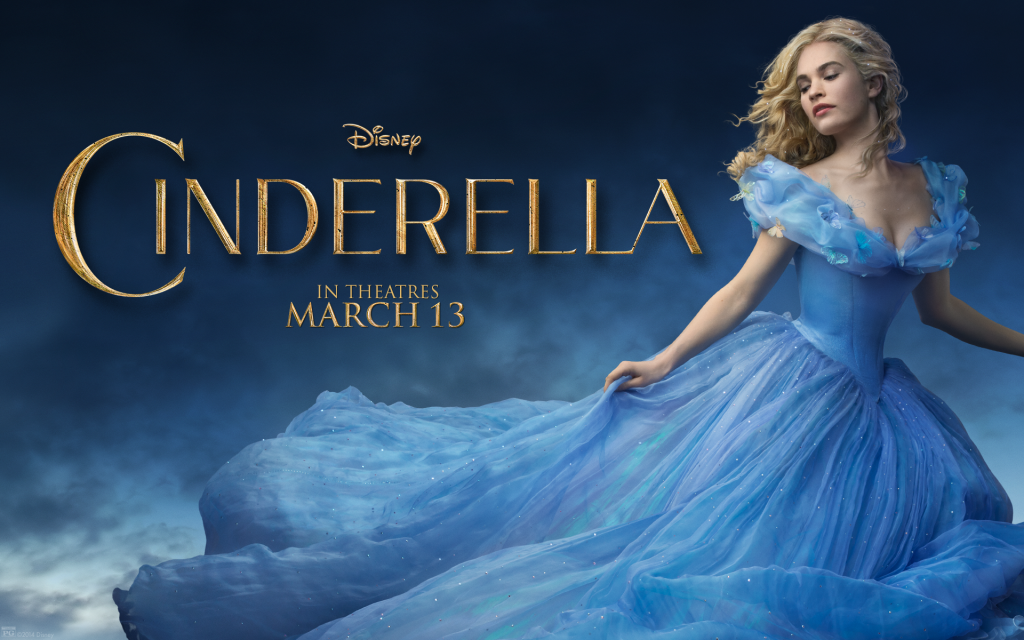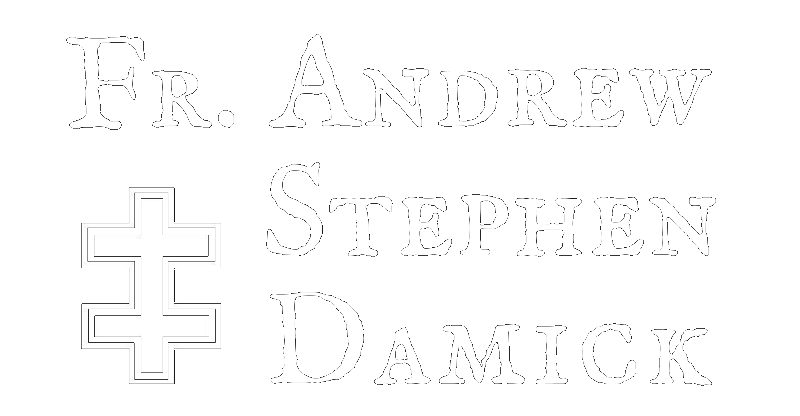
Yesterday afternoon, my two older children and I went to go see the new, live-action Disney film Cinderella, directed by Kenneth Branagh and starring Lily James as Cinderella and Cate Blanchett as Lady Tremaine (the Stepmother). And I wanted to say a few things about it. (I’m not a professional movie critic, so this will not be the usual review. And yes, there are spoilers herein. So don’t keep reading if you don’t want them.)
The thing that probably struck me the most was how unironic the film was. Mind you, I love irony. I got my undergraduate degree in English literature, after all. But I am also aware that irony’s best purpose is to reveal darkness so that it can be exposed and dealt with. But irony in fairy tales is something that ultimately yields a dark tale. There are actually plenty of old fairy tales that are ironic and dark. You can find irony aplenty in Andrew Lang’s “Coloured” Fairy Books (which I read thoroughly as a child). Irony in fairy stories does not yield “happily ever after.”
It may be that, for a while, our culture hasn’t been interested in “happily ever after.” I myself am from Generation X, and if ever there were a generation that tends to think all those “afters” don’t stand a chance being “happily ever,” it’s ours.
But as I watched this film with two of my children (a daughter, 8, and a son, 5), it gradually dawned on me that this film was being played straight from start to finish. Who does that any more?
I kept waiting for some weird, ironic twist, some chortling aside, probably a parody of the 1950 animated original which forms much of the DNA for this film but of which it is not a direct live-action translation. But it never came. Yes, the Fairy Godmother (Helena Bonham-Carter) delivered a few half-muttered “bibbity-bobbity-boos,” but there was still never a sideways glance at the audience, letting us know that we were making a joke out of the old Cinderella, eviscerating it to suit postmodern tastes.
The film didn’t paper over pain as so many of the old animated fairy tales did, though. The film dealt, for instance, with Cinderella’s father’s motivations in getting remarried—the man was just looking for happiness, years after his first wife’s death. And we watched three different people die in this film—each of Cinderella’s parents, as well as the Prince’s father. And their loss was shown acutely on-screen. All of this pain and loss shaped the story deeply. This is a film that is appropriate for children but also grown-up enough for those who know how pain works.
There were a lot of smiles and even some tears on my kids’ faces, especially on my daughter’s. She cried when Cinderella’s mother died. And she smiled at the magic of the Fairy Godmother and the beauty of the dancing at the royal ball. Maybe “happily ever after” is for kids. But maybe not.
As Christians, we do believe in “happily ever after.” We believe that, someday, an end will come to death itself. This is not quite the message of Cinderella, of course (in one of the last scenes, both Cinderella and her new husband are looking at portraits of all their deceased parents), but nevertheless, the message is that those who are good will finally triumph and enjoy blessedness in the end.
The central moral message of the film, repeated several times, is “have courage and be kind.” There is much more that a Christian could add to that ethic, of course, but even as a standalone, it is powerful. Cinderella never breaks it, though she has a moment of doubt just before her Fairy Godmother shows up.
But the Fairy Godmother doesn’t just start granting wishes. She first tests Cinderella’s kindness by appearing as a beggar woman asking for some bread and milk. Cinderella, of course, passes the test, even though she had just suffered through the dress-tearing scene that makes it into both the animated version and this one.
One of the most telling moments in the film is when Cinderella uses some of that courage to ask her stepmother why she has mistreated her so, even when she had tried so hard to be kind to her. The stepmother replies:
Why? Because you are young and innocent and good. And I—
This is how evil works. It is always based in some way in envy, whether it is envy for something one is not, something one cannot have, etc. Envy always has to ruin what is good, even though the act doesn’t actually satisfy. The original sin itself was a sin of envy, the desire to “be like God,” yet without God.
I wondered as I was watching how the film would handle what happens to the stepmother and the ridiculously vain and materialistic sisters. (This last trait is emphasized again and again in the film. When the death of Cinderella’s father while he is away on business is discovered, while she is weeping for her loss, they are complaining that they would never receive the parasols and lace they had requested.) The 1950 animated film doesn’t deal with their fate, and some of the old fairy tale versions have some rather bad ends come to them. (Cinderella as a revenge tale? You bet. That kind of thing happens all the time in the old tales. In one version, the stepsisters’ eyes get pecked out by birds friendly to Cinderella.)
In this film, the last moment we see the stepmother is as Cinderella is being led away by her love. Cinderella turns to her and says, without any triumphalism, “I forgive you.” The stepmother continues her look of envy, and the narrator tells us that the stepmother leaves the kingdom along with the grand duke she had conspired with in an attempt to hide Cinderella’s existence from the Prince. So there is forgiveness, but there are still consequences for evil. Although the stepsisters (whose fate is not mentioned) sheepishly ask to be forgiven, there’s no indication from the stepmother herself that she has any remorse. There’s also no place in the Kingdom of God for the unrepentant.
It is really a delightful film, and it stands out in so many beautiful ways. It has all of the charm of the 1950 animated film and expands on it with realism. It is still a fairy tale, however, and so while we see pain and loss, the characters are not really very complicated. They still have some depth to them, though, and that depth is accomplished without heading down the tempting road of irony.
Go see it.




Thank you, Fr. Andrew. I recently saw this film with my wife. Did you see parallels between Cinderella and the Hesychastic / Ascetic practice of the Orthodox Church?
It didn’t occur to me, but I can see it. I don’t think it’s intended that way, but “parallel” is a good way to put it.
One element I might add to your analysis is Cinderella’s solitary life, essentially living in a rough “cell” up in the attic.
Good point! And she dwelt there with joy.
Sounds good. I would also recommend for Christians to look up “La Cenerentola”, a Cinderalla opera by Rossini. Rossini specifically meant to show Christian virtues in his version. There is an angel instead of a fairy and the forgiveness of the step-sisters at the end is a large point of the story. So glad to hear that Disney included that in this version even if it is small.
During my Former Days, I actually worked at a stage production of La Cenerentola.
Thanks for this review, Father. I have a mildly developmentally disabled teen daughter who is on the autism spectrum. Cinderella has always been her favorite princess story. I’m glad to know I can take her to this with no qualms.
Thank you Father. I loved this movie! Cinderella has always been my favorite fairy tale and I remember my grandmother and mother reading it to me in Greek . Cinderella is not only beautiful on the outside but on the inside as well. This is what we should all aspire to be. But more so if we are truly followers of Christ.
Fr. Andrew
I pray all is well as we near the feast of feasts..
Recently you wrote an article on Monophysites it was on Facebook.
I would like if you could send it to me as I am dealing with a one questions from Teens and young adults in bit. I just thought it was well written and we’ll explained.
Much love
Alex Younes
I think you must have me confused with someone else. I’ve never written such an article.